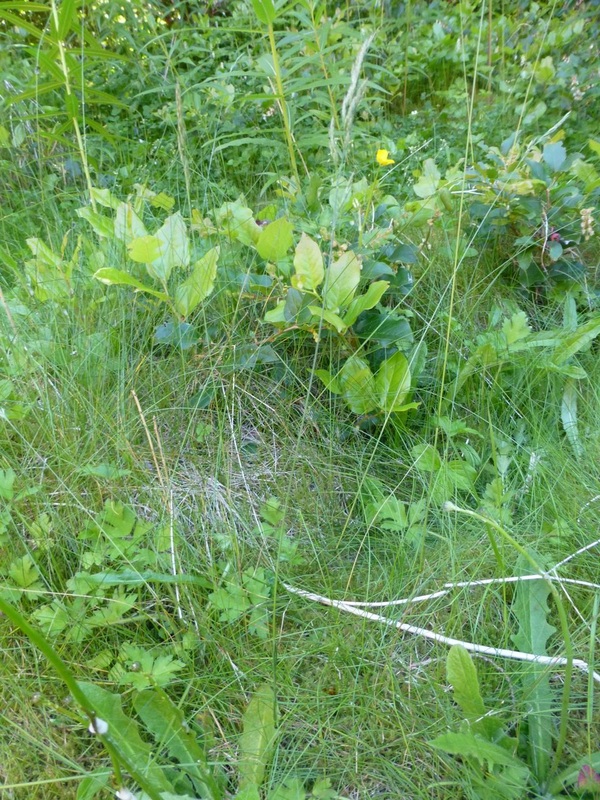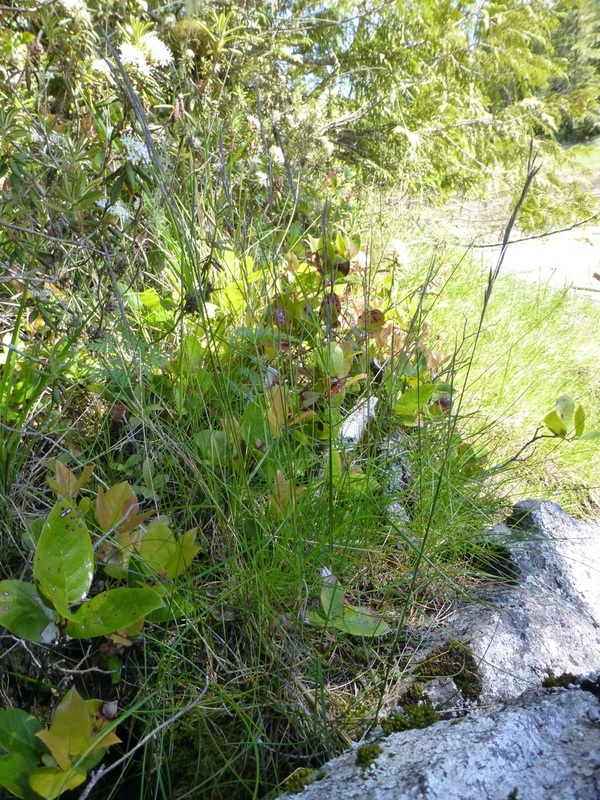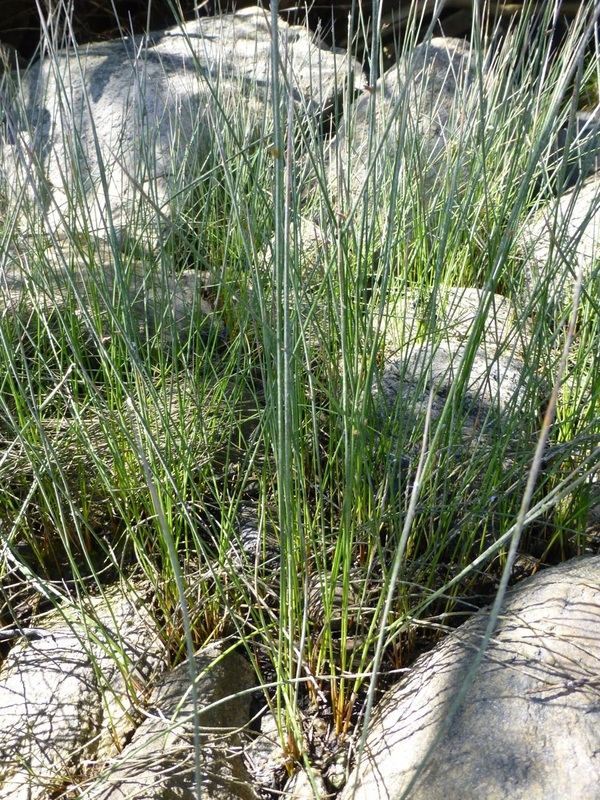Red fescue • Festuca rubra
Identification
Red fescue is a loosely tufted perennial grass with rhizomes. Its stem grows 20-100 cm tall and may be bent at the base. The stem base and leaf sheaths are reddish. Older leaf sheaths shred into brown curly fibres. The narrow leaves are folded or rolled-in and have short ligules. The inflorescence takes the form of an open or loosely compact panicle with reddish-purple or green spikelets. Click here for diagrams and further identification information.
Habitat & Range
Red fescue grows in a variety of open or disturbed habitats, from shorelines (tidal marshes, beaches, stream banks) to roadsides, mountain meadows, and fields. It is found from low to alpine elevations, and is a common species in coastal and southern BC. It is found across most of North America, as well as Greenland, Iceland, and Eurasia.
Intriguing Info
Red fescue was once a main natural component of grasslands and mountain meadows. While this is still true in some areas it is now considered an introduced species in other locations, particularly in disturbed habitats. It is cultivated for agricultural and horticultural uses, including as forage, in lawns, and for erosion control.
Red fescue is a loosely tufted perennial grass with rhizomes. Its stem grows 20-100 cm tall and may be bent at the base. The stem base and leaf sheaths are reddish. Older leaf sheaths shred into brown curly fibres. The narrow leaves are folded or rolled-in and have short ligules. The inflorescence takes the form of an open or loosely compact panicle with reddish-purple or green spikelets. Click here for diagrams and further identification information.
Habitat & Range
Red fescue grows in a variety of open or disturbed habitats, from shorelines (tidal marshes, beaches, stream banks) to roadsides, mountain meadows, and fields. It is found from low to alpine elevations, and is a common species in coastal and southern BC. It is found across most of North America, as well as Greenland, Iceland, and Eurasia.
Intriguing Info
Red fescue was once a main natural component of grasslands and mountain meadows. While this is still true in some areas it is now considered an introduced species in other locations, particularly in disturbed habitats. It is cultivated for agricultural and horticultural uses, including as forage, in lawns, and for erosion control.
References
Festuca rubra L. . In Klinkenberg, Brian. (Ed.). E-Flora BC: Electronic Atlas of the Plants of British Columbia. Lab for Advanced Spatial Analysis, Department of Geography, University of British Columbia, Vancouver. Accessed 27/10/2013.
Pojar, J. and MacKinnon, A. (1994). Plants of Coastal British Columbia. Vancouver, BC: Lone Pine Publishing. P. 376.
Authors and editors
Kelly Fretwell, Ian Cruickshank, and Brian Starzomski
Festuca rubra L. . In Klinkenberg, Brian. (Ed.). E-Flora BC: Electronic Atlas of the Plants of British Columbia. Lab for Advanced Spatial Analysis, Department of Geography, University of British Columbia, Vancouver. Accessed 27/10/2013.
Pojar, J. and MacKinnon, A. (1994). Plants of Coastal British Columbia. Vancouver, BC: Lone Pine Publishing. P. 376.
Authors and editors
Kelly Fretwell, Ian Cruickshank, and Brian Starzomski






